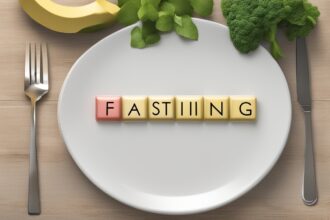Intermittent fasting (IF) has gained immense popularity as a weight loss strategy and a way to improve overall health. Unlike traditional diets that focus on what you eat, intermittent fasting centers on when you eat. By incorporating structured eating windows and fasting periods, IF can help you reduce calorie intake, boost metabolism, and achieve sustainable weight loss. One of the keys to success with this approach is having well-thought-out intermittent fasting meal plans that ensure you’re getting proper nutrition during your eating windows. In this post, we’ll explore how to create effective meal plans for intermittent fasting, the benefits of this eating pattern, and practical tips to make it work for you.
What Is Intermittent Fasting and How Does It Work for Weight Loss?
Intermittent fasting is an eating pattern that alternates between periods of fasting and eating. Popular methods include the 16/8 method (fasting for 16 hours and eating during an 8-hour window), the 5:2 diet (eating normally for 5 days and restricting calories on 2 days), and the Eat-Stop-Eat approach (24-hour fasts once or twice a week). The primary mechanism behind IF for weight loss is calorie restriction—by limiting the time you eat, you’re likely to consume fewer calories overall. Additionally, fasting can increase levels of norepinephrine, a hormone that boosts fat burning, and improve insulin sensitivity, which helps regulate blood sugar and prevent fat storage.
When paired with balanced intermittent fasting meal plans, IF becomes a sustainable way to lose weight without feeling deprived. The focus shifts from restrictive food choices to timing, allowing flexibility in what you eat while still achieving results.
Benefits of Intermittent Fasting Beyond Weight Loss
While weight loss is a primary goal for many, intermittent fasting offers numerous other health benefits. Studies suggest that IF can improve brain health by increasing the production of brain-derived neurotrophic factor (BDNF), a protein linked to learning and memory. It may also reduce inflammation, lower the risk of chronic diseases like type 2 diabetes, and support heart health by improving blood pressure and cholesterol levels. Furthermore, fasting periods give your digestive system a break, potentially enhancing gut health.
By following structured intermittent fasting meal plans, you can maximize these benefits while ensuring your body gets the nutrients it needs during eating windows. If you’re curious about how fasting impacts metabolism, check out our detailed guide on how metabolism affects weight loss.
How to Create Effective Intermittent Fasting Meal Plans
Creating intermittent fasting meal plans is essential to avoid nutritional deficiencies and maintain energy levels. Start by choosing a fasting method that suits your lifestyle. For beginners, the 16/8 method is often the easiest to follow. Here’s a step-by-step guide to building your meal plan:
- Determine Your Eating Window: If you’re following the 16/8 method, decide when your 8-hour eating window will be (e.g., 12 PM to 8 PM).
- Plan Balanced Meals: Focus on nutrient-dense foods like lean proteins, healthy fats, whole grains, and plenty of fruits and vegetables to meet your nutritional needs.
- Stay Hydrated: During fasting periods, drink water, herbal teas, or black coffee to curb hunger and stay hydrated.
- Avoid Overeating: It’s tempting to overeat during eating windows, but aim for moderate portions to maintain a calorie deficit for weight loss.
For more tips on balancing nutrients, read our post on healthy eating strategies for sustainable weight loss.
Sample Intermittent Fasting Meal Plan for the 16/8 Method
Here’s a sample intermittent fasting meal plan for a day using the 16/8 method with an eating window from 12 PM to 8 PM. This plan is designed for a moderately active adult and can be adjusted based on your calorie needs and dietary preferences.
- 12:00 PM (First Meal): A veggie-packed omelet with 3 eggs, spinach, tomatoes, and a slice of whole-grain toast. Pair with a small avocado for healthy fats.
- 3:00 PM (Snack): A handful of mixed nuts (almonds, walnuts) and a medium apple for a balance of protein, fiber, and natural sugars.
- 6:00 PM (Dinner): Grilled chicken breast with quinoa and steamed broccoli. Drizzle with olive oil and lemon for flavor.
- 7:30 PM (Dessert/Snack): A small bowl of Greek yogurt topped with a few berries to satisfy sweet cravings without excess sugar.
This plan prioritizes whole foods and balanced macronutrients to keep you full and energized. For additional meal ideas, explore our collection of easy weight loss recipes.
Common Challenges with Intermittent Fasting Meal Plans and How to Overcome Them
While intermittent fasting can be effective, it’s not without challenges. Hunger during fasting periods, social eating pressures, and the risk of overeating during eating windows are common hurdles. To manage hunger, stay busy during fasting hours and sip on zero-calorie beverages like water or green tea. If social events fall outside your eating window, plan ahead by shifting your window slightly or focusing on non-food aspects of the gathering. To prevent overeating, practice mindful eating—eat slowly and stop when you’re satisfied, not stuffed.
Another challenge is ensuring nutritional balance. Without proper planning, you might miss out on essential nutrients. Use tools like meal tracking apps or consult a nutritionist to tailor your intermittent fasting meal plans to your needs. For more on mindful eating, see our guide on mindful eating for weight loss.
Tips for Long-Term Success with Intermittent Fasting
Sustainability is key to making intermittent fasting work for weight loss. Start gradually—if 16/8 feels too restrictive, begin with a 12/12 schedule and work your way up. Be flexible; if a certain fasting method doesn’t suit you, try another. Listen to your body—fasting shouldn’t leave you feeling weak or irritable. If it does, adjust your meal plans or consult a healthcare provider. Finally, pair IF with regular physical activity for optimal results. Exercise can enhance fat loss and improve overall health when combined with well-structured intermittent fasting meal plans. Learn more about combining diet and exercise in our article on balancing diet and exercise for weight loss.
Disclaimer: The information provided in this post is for educational purposes only and should not be considered medical advice. Intermittent fasting may not be suitable for everyone, including pregnant or breastfeeding individuals, those with certain medical conditions, or people with a history of eating disorders. Always consult a healthcare professional or registered dietitian before starting any new diet or fasting regimen to ensure it’s safe and appropriate for your individual health needs.
References
- Harvard Health: Intermittent Fasting: Surprising Update
- Mayo Clinic: Intermittent Fasting FAQ
- New England Journal of Medicine: Effects of Intermittent Fasting on Health, Aging, and Disease
- NCBI: Intermittent Fasting and Weight Loss
- WebMD: What Is Intermittent Fasting?
This content is for informational purposes only and not a substitute for professional advice.






